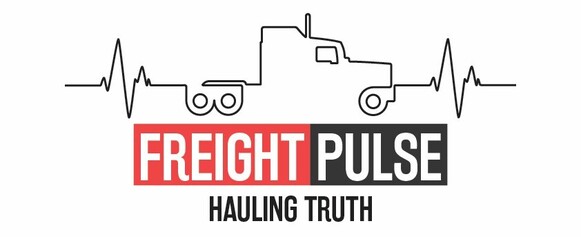North American Class 8 truck orders remained under pressure in March 2025, slipping for yet another month amid a backdrop of economic uncertainty, shifting trade policy, and evolving environmental regulations. According to preliminary data from ACT Research, fleets ordered approximately 16,000 units, marking an 8.3% decline compared to March 2024 and a 12.6% drop from February 2025. This trend continues a several-month pattern of softer demand across the heavy-duty truck segment.
“The defining theme of Q1 2025 has been uncertainty,” said Carter Vieth, research analyst at ACT Research. “Whether due to a decelerating economy, fleet managers delaying expansion, or apprehension over regulatory and trade shifts, it’s clear the industry is hesitant to commit to large capital expenditures.”
Despite the sequential decline in raw numbers, seasonally adjusted figures provided a glimmer of stability. Adjusted orders edged up 1.1% month-over-month to 16,500 units, but this still represents the weakest seasonally adjusted annual rate in nearly three years reflecting the depth of current market malaise.
Industry executives echoed ACT’s cautious tone. “The year-over-year and month-over-month declines reflect ongoing challenges,” said Magnus Koeck, vice president of strategy, marketing and brand management at Volvo Trucks North America. “Low contract and spot freight rates continue to erode profitability, limiting carriers’ appetite for new vehicle investments.”

Another significant factor contributing to this caution is regulatory uncertainty, particularly surrounding the U.S. Environmental Protection Agency’s upcoming Phase 3 Greenhouse Gas Emissions Standards. Set to go into effect in 2027, these new standards would require major reductions in emissions for heavy-duty vehicles. While some had speculated about a potential pre-buy surge ahead of the rules, no such trend has materialized.
“As it stands, we don’t see clear signs of a pre-buy boom ahead of the 2027 regulation deadline,” said Koeck. “The mix of volatile freight rates, unclear regulatory details, and now, the added pressure of new tariffs, has compounded fleet hesitancy.”
Indeed, recent trade policy developments have only added to the instability. On April 2, former President Donald Trump announced a sweeping new tariff policy, applying a baseline 10% tariff on all imports and significantly hiking tariffs on Chinese goods to 125%. Though he paused the plan just a week later for a 90-day review period, the damage to business confidence may already be done.
“Tariff policy has become a major variable in fleet planning,” said Jonathan Randall, president of Mack Trucks North America. “We were seeing resilience in core vocational markets, but the on-highway segment continues to struggle under freight slowdowns. Now, the tariff changes are introducing new layers of cost uncertainty that could ripple through the supply chain.”
Additional insight from FTR Transportation Intelligence confirmed the industry-wide slowdown. The firm reported preliminary net Class 8 orders fell 22% year-over-year in March to 15,700 units, a 14% drop from February. The figures are well below the seven-year March average of roughly 24,760 units.
FTR Senior Analyst Dan Moyer pointed to a confluence of risks. “Persistent uncertainty around tariffs, freight demand, macroeconomic indicators, and environmental regulations continues to distort fleet replacement cycles,” Moyer said. “We might see some operators rush purchases ahead of cost increases, but most appear to be waiting for more clarity before committing.”
He also noted that for the year to date, net Class 8 orders are down 25% from the same period in 2024, suggesting the pullback is not a blip but part of a broader, more sustained trend. Vocational truck orders were particularly weak in March, though the long-haul segment also saw notable softness.
The industry faces a complicated path forward. With tariffs poised to raise costs on everything from raw materials to finished vehicles, original equipment manufacturers (OEMs) and their suppliers may consider reconfiguring supply chains or shifting production to mitigate exposure moves that come with significant complexity and cost.
“These aren’t easy or fast decisions,” Moyer said. “Tariff-driven production shifts require time, capital, and strategic recalibration. In the meantime, the industry remains in a holding pattern, waiting for a more predictable operating environment.”
What to expect in April?
As of early April 2025, North America’s Class 8 truck market continues to face significant challenges, with fleet investment remaining subdued due to a combination of economic uncertainty, trade policy shifts, and evolving environmental regulations.
Factors Influencing Fleet Decisions
- Trade Policy Uncertainty: The introduction of new tariffs and the potential for retaliatory measures are expected to increase costs for Class 8 trucks, tractors, and related components. This uncertainty is causing fleets to delay investments until the trade environment stabilizes.
- Economic Conditions: Persistent uncertainty in the broader economy, including freight demand and regulatory changes, is disrupting fleet replacement cycles. Fleets are hesitant to make significant investments amid these unpredictable conditions.
- Environmental Regulations: Anticipated revisions to the U.S. EPA’s 2027 NOx regulations are adding another layer of complexity. Fleets are weighing the implications of these upcoming standards on their long-term investment strategies.
Industry analysts suggest that unless there is greater clarity in trade policies and economic indicators, fleets may continue to postpone new truck orders. The combination of trade tensions, economic uncertainty, and impending environmental regulations is creating a challenging environment for the Class 8 truck market.
As of now, the market is characterized by cautious spending and strategic planning, with fleets closely monitoring developments that could impact their operations and investment decisions.

